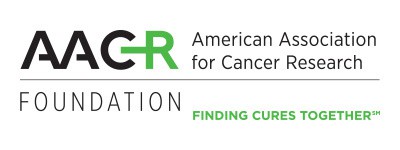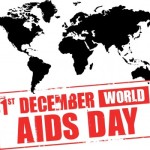Robin Williams: Could his death have been prevented? UPDATED
What is your favorite Robin Williams role?
John Keating from Dead Poet’s Society? Adrian Cronauer from Good Morning Vietnam? Dr. Sean Maguire from Good Will Hunting? Mrs. Doubtfire? The Genie from Aladdin? Or just Robin as stand-up comedian?
The announcement that the Academy Award winner had died felt like a kick in the gut to this fan, who had been following his career since his Mork and Mindy days. Many others, I’m sure, feel the same sense of shock and disbelief.
Paramedics found Williams unconscious at his home yesterday morning, and he died shortly thereafter. The Marin County Coroner’s Division said the death appeared to be a “suicide due to asphyxia,” although a further investigation in underway. A press conference is planned for later today.
Despite all the joy and laughter he brought, Williams was candid about the demons he fought throughout his life- those of drug and alcohol addiction and depression. According to his publicist, Mara Buxbaum, Williams had been struggling with severe depression in recent days.
Last month, Williams spent few weeks at the Hazelden facility in Minnesota, participating in a program designed to reinforce sobriety. He had not “fallen off the wagon” but according to his rep:
“After working back-to-back projects, Robin is simply taking the opportunity to fine-tune and focus on his continued commitment, of which he remains extremely proud.”
A statement from his wife, Susan Schneider, said:
“This morning, I lost my husband and my best friend, while the world lost one of its most beloved artists and beautiful human beings. I am utterly heartbroken. As he is remembered, it is our hope the focus will not be on Robin’s death, but on the countless moments of joy and laughter he gave to millions.”
In that spirit, we share this montage of favorite Robin Williams roles.
UPDATE:
Here is the statement of Lt. Keith Boyd, assistant chief deputy coroner for Marin County, Calif:
Suicide and Depression
Everyone occasionally feels blue or sad. But these feelings are usually short-lived and pass within a couple of days. When you have depression, it interferes with daily life and causes pain for both you and those who care about you. Depression is a common but serious illness.
Many people with a depressive illness never seek treatment. But the majority, even those with the most severe depression, can get better with treatment. Medications, psychotherapies, and other methods can effectively treat people with depression.
What are the signs and symptoms of depression?
People with depressive illnesses do not all experience the same symptoms. The severity, frequency, and duration of symptoms vary depending on the individual and his or her particular illness.
Signs and symptoms include:
- Persistent sad, anxious, or “empty” feelings
- Feelings of hopelessness or pessimism
- Feelings of guilt, worthlessness, or helplessness
- Irritability, restlessness
- Loss of interest in activities or hobbies once pleasurable, including sex
- Fatigue and decreased energy
- Difficulty concentrating, remembering details, and making decisions
- Insomnia, early-morning wakefulness, or excessive sleeping
- Overeating, or appetite loss
- Thoughts of suicide, suicide attempts
- Aches or pains, headaches, cramps, or digestive problems that do not ease even with treatment.
Suicide
Suicide is a major public health concern. Around 38,000 people die by suicide each year in the United States- more people than by homicide.
Suicide does not discriminate. People of all genders, ages, and ethnicities are at risk for suicide. But people most at risk tend to share certain characteristics.
The main risk factors for suicide are:
- Depression, other mental disorders, or substance abuse disorder
- A prior suicide attempt
- Family history of a mental disorder or substance abuse
- Family history of suicide
- Family violence, including physical or sexual abuse
- Having guns or other firearms in the home
- Incarceration, being in prison or jail
- Being exposed to others’ suicidal behavior, such as that of family members, peers, or media figures.
The risk for suicidal behavior also is associated with changes in brain chemicals called neurotransmitters, including serotonin, which is also associated with depression. Lower levels of serotonin have been found in the brains of people with a history of suicide attempts.
Many people have some of these risk factors but do not attempt suicide. Suicide is not a normal response to stress. It is however, a sign of extreme distress, not a harmless bid for attention.
The following are some of the signs you might notice in yourself or a friend that may be reason for concern:
- Talking about wanting to die or to kill oneself
- Looking for a way to kill oneself, such as searching online or buying a gun
- Talking about feeling hopeless or having no reason to live
- Talking about feeling trapped or in unbearable pain
- Talking about being a burden to others
- Increasing the use of alcohol or drugs
- Acting anxious or agitated; behaving recklessly
- Sleeping too little or too much
- Withdrawing or feeling isolated
- Showing rage or talking about seeking revenge
- Displaying extreme mood swings
How can suicide be prevented?
Effective suicide prevention takes into account people’s risk factors and promote interventions that are appropriate to specific groups of people. For example, research has shown that mental and substance abuse disorders are risk factors for suicide. Therefore, many programs focus on treating these disorders in addition to addressing suicide risk specifically.
Psychotherapy, or “talk therapy,” can effectively reduce suicide risk. One type is called cognitive behavioral therapy (CBT). CBT can help people learn new ways of dealing with stressful experiences by training them to consider alternative actions when thoughts of suicide arise.
Another type of psychotherapy called dialectical behavior therapy (DBT) has been shown to reduce the rate of suicide among people with borderline personality disorder, a serious mental illness characterized by unstable moods, relationships, self-image, and behavior. A therapist trained in DBT helps a person recognize when his or her feelings or actions are disruptive or unhealthy, and teaches the skills needed to deal better with upsetting situations.
Some medications may also help. For example, the antipsychotic medication clozapine is approved by the U.S. Food and Drug Administration for suicide prevention in people with schizophrenia. Other promising medications and psychosocial treatments for suicidal people are being tested.
What can I do for myself or someone else?
If you are concerned, immediate action is very important. Suicide can be prevented and most people who feel suicidal demonstrate warning signs. Recognizing some of these warning signs is the first step in helping yourself or someone you care about.
If you know someone who is considering suicide, do not leave him or her alone. Try to get your loved one to seek immediate help from his or her doctor or the nearest hospital emergency room, or call 911. Remove any access he or she may have to firearms or other potential tools for suicide, including medications.
If you are in crisis
Call the toll-free National Suicide Prevention Lifeline at 1-800-273-TALK (8255), available 24 hours a day, 7 days a week. The service is available to anyone. All calls are confidential.
Source: National Institute of Mental Health



























0 comments